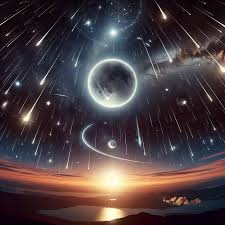July 2025 is turning into a stargazer’s dream, as three major meteor showers—the Alpha Capricornids, Southern Delta Aquariids, and the Perseids—converge to create a dazzling display across the night sky. Each shower brings its own unique rhythm, origin, and visual flair, offering multiple chances to witness nature’s fireworks.
🌠 Alpha Capricornids
Active from July 12 to August 12, this shower peaks on the night of July 29–30. Though modest in volume—about 5 meteors per hour—the Alpha Capricornids are known for their exceptionally bright fireballs, often visible even in light-polluted skies. Originating from Comet 169P/NEAT, these meteors are slow-moving and dramatic, making them ideal for evening viewing around 10:00 p.m. local time.
🌌 Southern Delta Aquariids
Also peaking on July 29–30, this shower is more prolific, producing 20–25 meteors per hour under dark skies. Best viewed from the Southern Hemisphere or southern latitudes, the meteors are typically faint and fast, with few persistent trails. They stem from Comet 96P/Machholz and are best seen after midnight, especially in areas with minimal moonlight.
🌟 Perseids
The crown jewel of summer meteor showers, the Perseids begin around July 17 and peak on August 12–13. They originate from Comet Swift-Tuttle, which orbits the Sun every 133 years. During peak conditions, the Perseids can produce 50–75 meteors per hour, many of which are bright and colorful. However, this year’s peak coincides with a waning gibbous Moon, which may obscure fainter meteors. Still, the Perseids remain active through late August, offering plenty of viewing opportunities.
Meteor showers occur when Earth passes through debris trails left by comets. As these particles enter our atmosphere, they burn up, creating the glowing streaks we see as meteors. No telescope is needed—just a dark sky, a bit of patience, and a sense of wonder.

